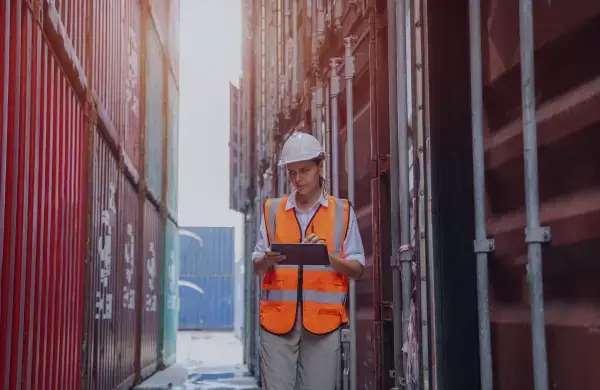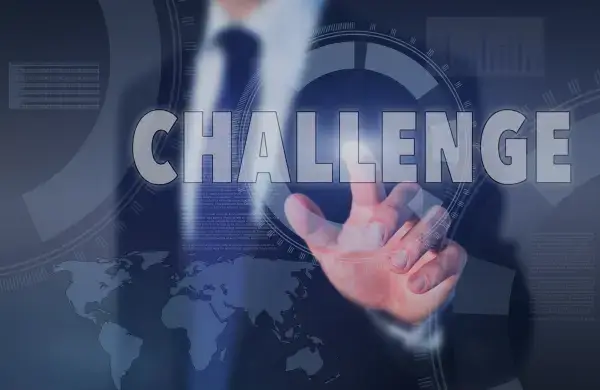Let’s go back in time to March of 2020. Do you remember the week that was later called the Great Toilet Paper Panic of 2020?
Before top executives at consumer-goods giant Kimberly-Clark rushed to shut their offices on Friday the 13th of March, they had one last emergency meeting. Commuting home that final time, Arist Mastorides, president of Family Care for North America, stopped at his local Walmart, on the edge of Lake Winnebago in Neenah, Wis., to see the emergency firsthand.
Mastorides oversaw toilet paper brands like Cottonelle and Scott, but that evening he could find none of his own products.
Source: fortune.com
“A long gondola shelf that’s completely empty of bathroom and facial tissue, I never in my life thought I would ever see that,” he says. “That’s a very unsettling thing.”
Sure, one part of the reason was panic-buying by consumers, but hey, a consumer’s mind is irrational and fearful. It’s the industry’s main objective to keep the shelves stocked, right? So, this could not have been the only reason for the shortage.
After all, at this time, toilet paper manufacturing facilities in the U.S. were fully operational. The Tissue Pack Innovation Lab in NC State University reported more than 99% of tissue products are manufactured right here in the United States.
Why did the panic happen then?
Tell you what, the elephant in the room, the biggest cause of the shortage, was Logistics, pure and simple.
EY research shows that the COVID-19 pandemic made existing supply chain problems worse and made us focus on things like visibility, resilience, and digitization.
In the complicated world of global trade, Logistics is the silent hero. It manages the flow of goods from factories to customers’ doors. It’s the core of supply chains, making sure everything happens at the right time. To be ready for other crises, we need invest in making robust supply chains, and autonomous supply chains are part of the answer.
Know About Logistics Challenge For An Efficient
Supply Chain
Imagine a world where products are always late and delays are normal. It would be horrible for everyone.
That’s why having a great supply chain partner, like Zetwerk, is so important. They do more than just transport goods – they help with distribution, storage, and delivery. They guide businesses to be efficient, cost-effective, and make customers happy. In this article, we explain why logistics is so important and why having a trusted partner can make a big difference in today’s fast and connected world.
Automation: The Need Of The Hour
Gone are the days when a multinational business could be handled just by using e-mail. The pandemic has indeed accelerated many pre-existing trends, and supply chain is no exception:
EY’s 2020 survey found that 64% of surveyed supply chain executives say digital transformation will accelerate due to the pandemic.
Source: ey.com
And the 2022 research report shows the race is on for digital enablement and automation:
By 2035, 45% of supply chains are expected to be mostly autonomous (e.g., robots in warehouses and stores, driverless forklifts and trucks, delivery drones and fully automated planning).
However, simply utilizing digital technologies does not equate to creating a digitized, autonomous supply chain — it also needs connected supply chain technologies across planning, procurement, manufacturing and logistics that work beyond the organization’s four walls. It’s the difference between “doing digital” and “being digital.” To bridge this difference, Zetwerk is your ideal partner to “being digital” throughout all steps of your logistics chain.
We can think about autonomous operations in terms of “lights-out,” “hands-free” and “self-driving,” where organizations use AI technologies across the end-to-end supply chain to help make predictive and prescriptive decisions.
An example is responding to a change in customer demand, seen instantly by the entire value chain (the organizations, its suppliers and their suppliers’ suppliers) so they can collectively adjust supply plans and production schedules immediately. Ultimately digital and autonomous technologies will help make people’s jobs easier and the supply chain more efficient and optimized.
60% of American executives say the pandemic has increased their supply chain’s strategic importance. Accordingly, enterprises urgently need to design a supply chain organization that will fit the new digital and autonomous-focused era.
Source: ey.com
Looking forward, multiple disruptions are happening more quickly and factors such as geopolitical risks, cyber threats and economic instability are continuing to put pressure on supply chains. So the supply chain of the future will need to be agile, flexible, efficient, resilient and digitally networked for improved visibility. This is how we do it at Zetwerk.
Handling Logistics: The Zetwerk Way
The Logistics team gets involved as soon as the finished product comes out of the factory. To optimize activities, we connect with sourcing and program managers to gain visibility for the next month’s calendar as well. We begin by looking for areas to optimize, then plan ahead and communicate any disruptions that may occur during peak seasons. As a general rule, we conduct logistics planning for the coming 4 weeks. We get visibility from sourcing and program managers for the coming 4 and 6 weeks.


The prospective mode of transport varies mainly upon the above points. Let’s quickly go through our modes of transport one by one, and the factors associated with each of them. We constantly monitor what is happening in the logistics industry, considering both macro and micro factors. This includes contingency planning and offering the best possible deals. Only after weighing these factors, we decide on a multi-modal transport plan that optimizes for quickest delivery to the client.
The client always gets the best total costs – e.g., the route might be – Factory to Delhi, Delhi to Texas airport, via XYZ airport. Every step and decision matters because there are different airport charges and handling charges. Having all the cargo details, we get multiple quotations, depending on the airlines, sensitivity, cost, urgency, etc. we choose the right partner and the appropriate INCOTERMS.
Ocean Shipping
- Low Volume Boat Transport
When cargo traffic is low, boat terminal operations may shut down terminals in different ports to minimize losses. This can have an impact on transit time and costs for us.
To mitigate any potential disruptions, we conduct logistics planning for the next four weeks. We obtain visibility from sourcing and program managers for both four and six weeks.
- Shipping Lines
For shipping lines, a minimum of 200-300 containers is required for a direct connection. Agents, on the other hand, can take orders from various locations across the country, giving them better negotiation power.
Air Freight
Different airlines have their own peak seasons, so priorities do differ and are communicated accordingly to the client well in advance to manage any contingencies. This way, the client is in a comfortable position to plan their processes accordingly in advance.
For example, if we are transferring cargo to London via British Airways, and there’s a possibility of the consignment getting stuck at Heathrow which is always low on space, it results in a pile-up of cargo. Pre-planning is done to avoid such time-consuming pitfalls.
We receive the packing list at least three days before cargo readiness. This allows us to request quotations from airlines and select the best option for the shipment based on factors such as cost, experience in international cargo, resilience, and service levels. We can choose to work directly with airlines or through freight agents. If we deal directly with airlines, we may not receive competitive rates due to our lower volume, whereas agents can negotiate better rates.
For example, during New Year and Christmas time, we know we’d hardly get transport options. So, we sometimes talk to chartered aircrafts who may have spare space and use them. Sure, it’s rare but we have done such movement of urgent cargo at same cost, meeting deadlines at peak times.
Road Transport
When transporting cargo by road, there are various departments such as GST, sales tax, intelligence, etc. that we need to engage with. Internal transportation also presents opportunities for criminal activities, so regular checks are conducted. While most officers are trustworthy, there may be a few who are not. To effectively navigate through them, it is important to have individuals who have established rapport with them.
Internal Container Depot (India-specific)
It’s the cheapest transport option available, but the rail movement is slow, and they will operate at their convenience. Typically, it takes 5-7 days for delivery. If there is a cutoff date, we must expedite the shipment directly through roads.




About Zetwerk
Zetwerk works with original equipment manufacturers in North America and worldwide, fulfilling their manufacturing requirements for customized components and assemblies. We act as a second brain to the OEMs. Our team of experts not just executes the customer’s manufacturing strategy, but adds tangible value at every step of the process, right from vetting designs to finding and managing the suppliers to quality control and logistics. Our customers regard us highly for our transparent and hands-on approach to manufacturing.
Zetwerk executes these projects through its network of partner suppliers spread across USA, India, China, Vietnam, and Mexico. These world-class facilities provide practically unlimited production processes, capacities, materials, part sizes, and weights as well as secondary operations, surface finishing, assembly, and related services. Importantly, we have our teams established in all these countries with a particularly large presence in the US.
Zetwerk recently acquired Unimacts, a US-based manufacturing services company, providing further impetus to our commitment to serve North America as a primary market. We have more than 2,000 customers across North America, Asia-Pacific and the Middle East, and a network of more than 10,000 manufacturing partners worldwide.
Founded in 2018, we are backed by some of the world’s leading venture capital firms including Sequoia, Kae Capital, Accel Partners, Lightspeed, and GreenOaks. As of 2023, Zetwerk was valued at US$ 2.8 Bn.
Our manufacturing facilities employ the latest techniques and maintain all relevant certifications to ensure the highest quality control for our customers as well as compliance with all regulatory requirements, and legal practices. You can view our certifications here.
To know more about how we function, check this.
If you are looking for a global sourcing partner, look no further.




